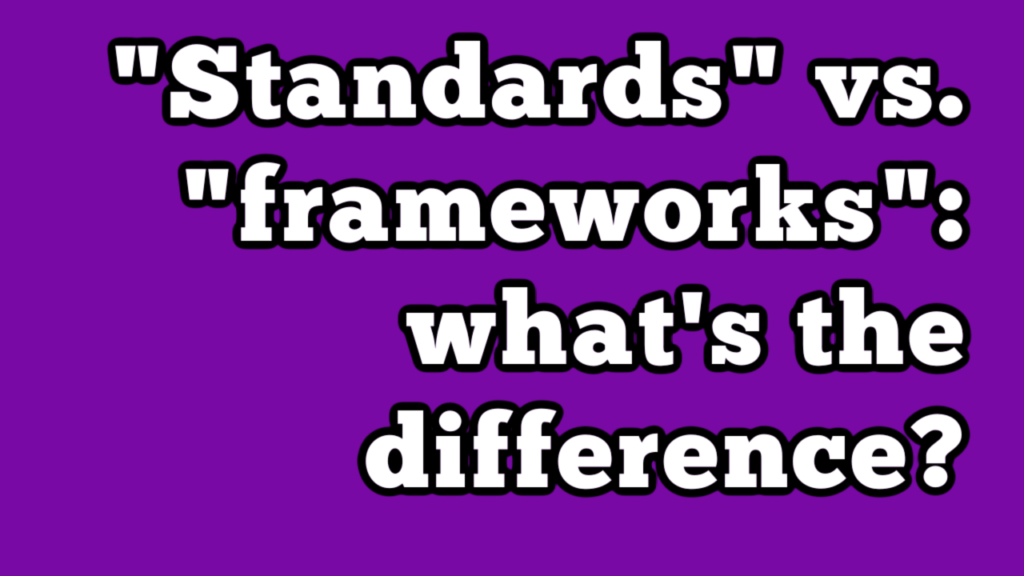“Standards” vs. “frameworks”: what’s the difference?

This note by Marie-Josée Privyk is helpful to understand the difference between “standards” and “frameworks” when it comes to ESG. Marie-Josée references this article by GRI. Here’s an excerpt:
To make it clear from the start, the sustainability landscape can be grouped in roughly two main directions: organizations that publish standards and the ones that issue frameworks or guiding principles. Of course, the world is not entirely black and white as some organizations tend to do both.
Standards are the agreed level of quality requirements, that people think is acceptable for reporting entities to meet. A standard can be thought of as containing specific and detailed criteria or metrics of ‘what’ should be reported on each topic. In general, corporate reporting standards have in common the following features: a public interest focus, independence, due process, and public consultation, generating a stronger basis for the information being asked.
Frameworks on the other hand provide the ‘frame’ to contextualize information. Frameworks are those that are normally put into practice in the absence of well-defined standards. A framework allows for flexibility in defining the direction, but not the method itself. A framework can be thought of as a set of principles providing guidance and shaping people’s thoughts on how to think about a certain topic, but miss a defined reporting obligation.
